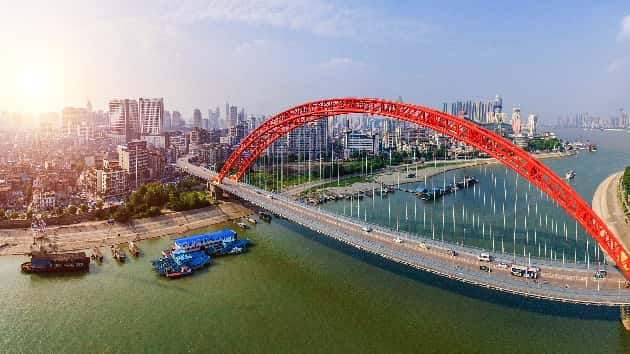
real444/iStock
real444/iStock(WUHAN, China) — As “Wuhan is Back!” banners hang over reopened shopping districts and the head of China’s National Health Commission declaring Tuesday that Wuhan is no longer a COVID-19 battleground, China announced that it will once again start including asymptomatic coronavirus cases in daily tallies beginning on Wednesday.
There have been growing concerns about possible “silent carriers” across the country as lockdown measures ease in Wuhan and Beijing is trying to get the rest of the country to jump-start the stricken economy.
Since mid-February, China has not included patients who have tested positive for COVID-19 but show no symptoms in its official count. As the coronavirus, however, spread across the globe and other nations included asymptomatic cases in their growing tallies, there has been a chorus of worry whether China’s numbers reflected the magnitude of infections.
Wuhan’s reporting of new cases in multiple consecutive days, has not included asymptomatic cases.
China’s NHC said that as of Monday, there are now 1,541 asymptomatic cases under medical observation across the country including 205 imported cases. It remains unclear if the country will disclose the backlog of asymptomatic cases since mid-February.
While most new reported cases in China in recent weeks are of the imported variety from Europe or the U.S., a local transmission case popped up over the weekend in the western province of Gansu. It was brought in by a man from Hubei province who had been allowed to leave the former epicenter with an all-clear “green health code.”
The criteria change signaled the central government in Beijing was taking the concerns seriously. Chinese Premier Li Keqiang instructed officials Monday to pay close attention to silent carriers after having warned officials last week to “not cover up reports for the sake of keeping new case numbers at zero.”
The delayed response to the COVID-19 outbreak in Wuhan has been blamed domestically and internationally on local level officials reluctant to deliver bad news to Beijing.
Chinese newsmagazine Caixin reported that new asymptomatic cases are still found every day, while the South China Morning Post reported last week that, based on classified government data that they saw, at the end of February a third of the positive cases in China presented no immediate symptoms. When the case tally was 80,000 at the end of February, SCMP reported that 43,000 asymptomatic cases were left off the list.
As a result, there is a growing distrust in other provinces of Hubei residents, whose travel restrictions were largely lifted last week. Hubei authorities said that 4.6 million out of 58.5 million residents in the province returned to work by Saturday and 2.8 million itinerant workers headed to other parts of China.
On Friday, a clash apparently broke out on a border bridge over the Yangtze River when Jiangxi police refused to let Hubei residents into their province. Videos circulated briefly on social media before being censored, showed angry Hubei residents, chanting “Go Hubei!”, rushing Jiangxi riot cops and even turning over a police vehicle.
International travelers entering China are not exempt from scrutiny. Domestically, China is repainting COVID-19 as a foreign threat. As of last weekend, China closed its borders to foreign nationals although 90% of the imported cases are returning Chinese passport holders.
As a result, foreigners are now facing discrimination within China. Not only are all foreigners, even those with residence permits, now banned from entering China, foreigners who remain in China are increasingly being viewed with suspicion and temporarily barred from some shops and restaurants as they cannot apply for a health code. Meanwhile, Wuhan has entered a period of soft openings before travel restrictions out of the city are expected to lift next week on April 8 and the state media has been eagerly pushing the recovery angle.
On Monday, 11 shopping malls including one of Wuhan’s fanciest, Wuhan International Plaza, reopened with limited shopping hours from 10 a.m. to 5 p.m. Cinemas and restaurants remained closed but if shoppers were in need of something from Cartier or Louis Vuitton, they were open for business.
China Central Television ran a three-hour livestream on its social media platforms showing the extensive measures put in place. Before entering the mall or each individual shop there are temperature checks, health code checks and signs that masks are mandatory.
Chinese citizens, especially those in harder-hit areas, are required to register for a QR code on their WeChat or AliPay app which assigns them a traffic light-like designation based on their health status: red, yellow and green
At the Chu River Han Street shopping district, some stores were still adjusting to the new normal of the post-COVID-19 world, only allowing limited shoppers. On the CCTV livestream, the reporter visiting a Xiaomi electronics store in the Wuhan’s Chu River Han Street shopping area was told only five customers are allowed inside at a time. At another electronic retailer, a CCTV reporter wanted to check out the new Huawei 5G phone but was told he would not be allowed to touch or handle the display phone.
Copyright © 2020, ABC Audio. All rights reserved.